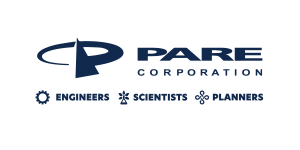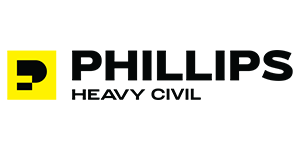Common Problems for Small Dams with Concrete Channel Spillways
Contents
- Earthen Embankments
- Trees and Brush
- Upstream Slope
- Crest
- Concrete Spillways
- Emergency and Auxiliary Spillways
- Dam Owner Academy Series
- Save this page as a printable Dam Owner's Fact Sheet [PDF]
The State Dam Safety Program has inspection requirements for state regulated dams. A dam, like any man-made structure, will change and deteriorate over time. Keeping a dam in good condition will allow better inspections and easier maintenance. Proper inspection and maintenance will help prevent small problems from turning into larger, more costly repairs. The following paragraphs and pictures address common problems that have been noted during inspections.
Earthen Embankments
The establishment and control of proper vegetation is an important part of dam maintenance. Properly maintained vegetation can help prevent erosion of embankment and earth channel surfaces, and aid in the control of groundhogs and muskrats. Embankment slopes are normally designed and constructed so that the surface drainage will be spread out in a thin layer as "sheet flow" over the grass cover. When the sod is in poor condition or flow is concentrated at one or more locations, the resulting erosion will leave rills and gullies in the embankment slope.
Trees and Brush
Trees and brush must not be permitted on embankment surfaces or in vegetated earth spillways. Extensive root systems can provide seepage paths for water. Trees that blow down or fall can leave large holes in the embankment. Brush hinders visual inspection, provides a haven for burrowing animals, and retards growth of grass or vegetation.
Upstream Slope
Slope protection may be needed to protect the upstream slope against erosion. Erosion can lead to cracking and sloughing, which can extend into the crest. Muskrats and groundhogs can also damage the slope. The upstream face of the dam is commonly protected against wave erosion by placement of a layer of rock riprap over a layer of bedding and a filter material.
Crest
Vehicular traffic should be discouraged, especially during wet conditions, to avoid ruts. Water collected in ruts may cause localized saturation, thereby weakening the embankment. Ruts can develop into low areas. Low areas on the crest increase the likelihood that a dam will be overtopped during severe floods. Earthen embankments are not designed to be overtopped. Should the dam overtop, floodwaters will concentrate in the low area, increasing the likelihood of erosion of the crest and downstream slope. Severe erosion can lead to failure of the embankment. A well-vegetated earth embankment may withstand limited overtopping if its crest is level and water flows over the crest and downstream slope as an evenly distributed sheet without becoming concentrated.
Concrete Spillways
A concrete weir or chute is often used as a principal spillway for dams. The principal spillways is the first spillways to experience flow after a storm when the pool rises above the normal pool level. For the spillway to be effective, it must be clear of obstructions, in good structural condition, and on a solid foundation. A spillway must remain unobstructed to maintain its flow capacity. Obstructions such as fish screens, walkways, vegetation, and bridge piers should be cleared from the spillway inlet. Loss of flow capacity could cause the dam to overtop and fail. The spillway must remain in good structural condition to ensure that spillway flow stays within the spillways and does not cause erosion that could cause the spillway to fail. Concrete surfaces should be visually examined for structural problems due to weathering, stress, chemical attack, erosion, and other destructive forces. Structural problems are indicated by cracking, exposure of reinforcing bars, and large areas of spalled concrete. Even if the spillway is in good structural condition, seepage under the spillway or erosion at the outlet or along the sides can cause the spillway to fail. Spillways floor slabs and walls should be checked for erosion of underlying base material known as undermining. Indicators of problems with seepage and erosion under the spillway include misalignment at joints and large cracks.
Emergency and Auxiliary Spillways
The emergency, or auxiliary, spillway is the second spillway to experience flow during a flood event. For many common dams, the emergency spillway consists of a grass-lined, earthen open channel. An open channel can convey much more flow than a pipe spillway, so it is important to keep the spillway free of obstructions. Obstructions reduce the flow capacity and could cause the dam to overtop and fail. Permanent structures including buildings, fences, and roadway embankments for access across the spillway should not be constructed in the spillway. Earthen channels should be protected by a good grass cover, an appropriately designed rock cover, concrete, or other various types of erosion control matting. Grass-lined channels should be mowed at least twice per year to maintain a good grass cover and to prevent trees, brush, and weeds from becoming established. Poor vegetal cover can result in extensive and rapid erosion when the spillway flows.
Dam Owner Academy: Spillways & Outlet Works
The Dam Owner Academy is a series of videos to educate and inform owners on all aspects of operating and maintaining a dam safely. The videos concisely present the critical basics of owner responsibilities and are available as a free resource for owners and those conducting owner outreach programs.
Common Problems with concrete channel spillways are discussed in the "Spillways & Outlet Works" video.


































